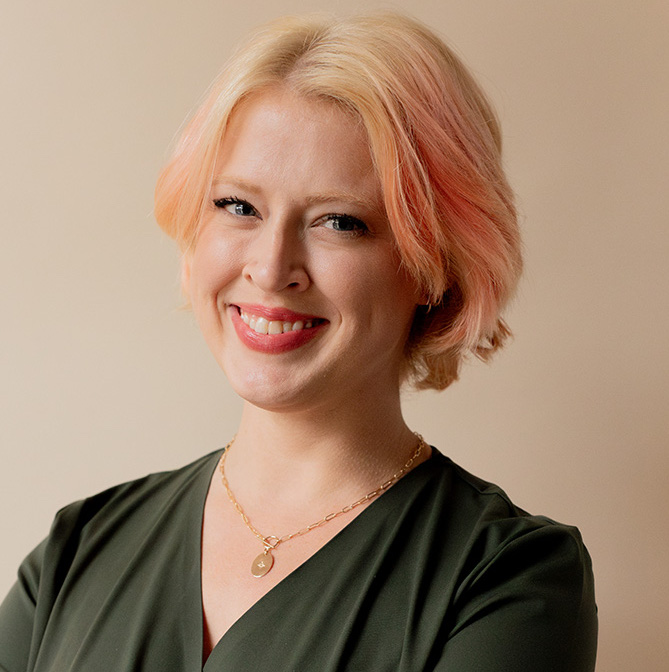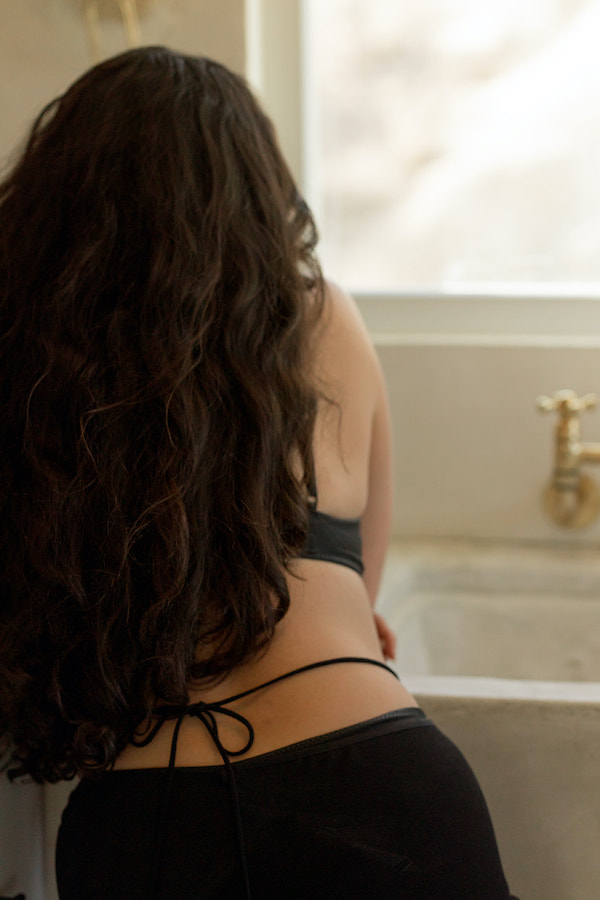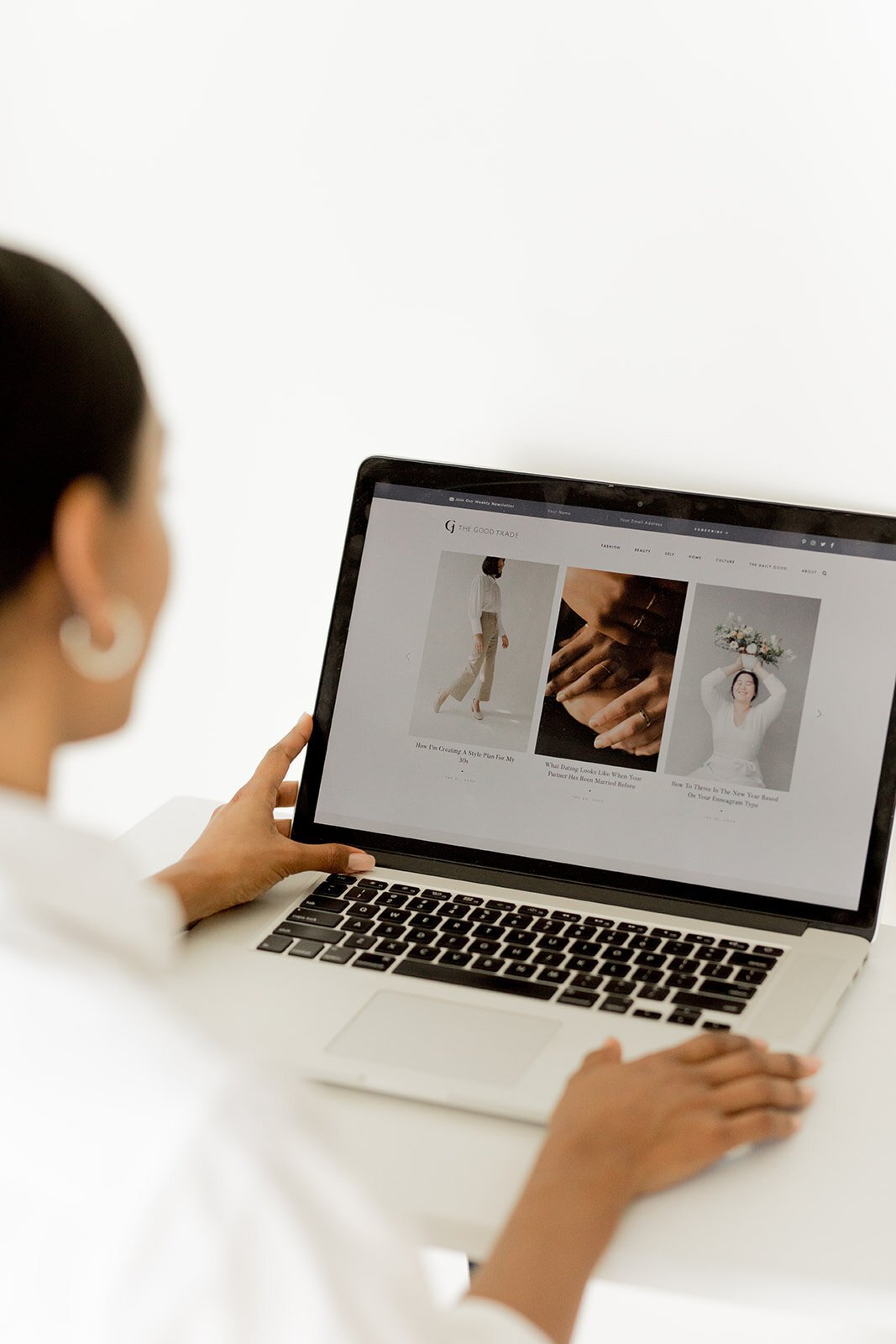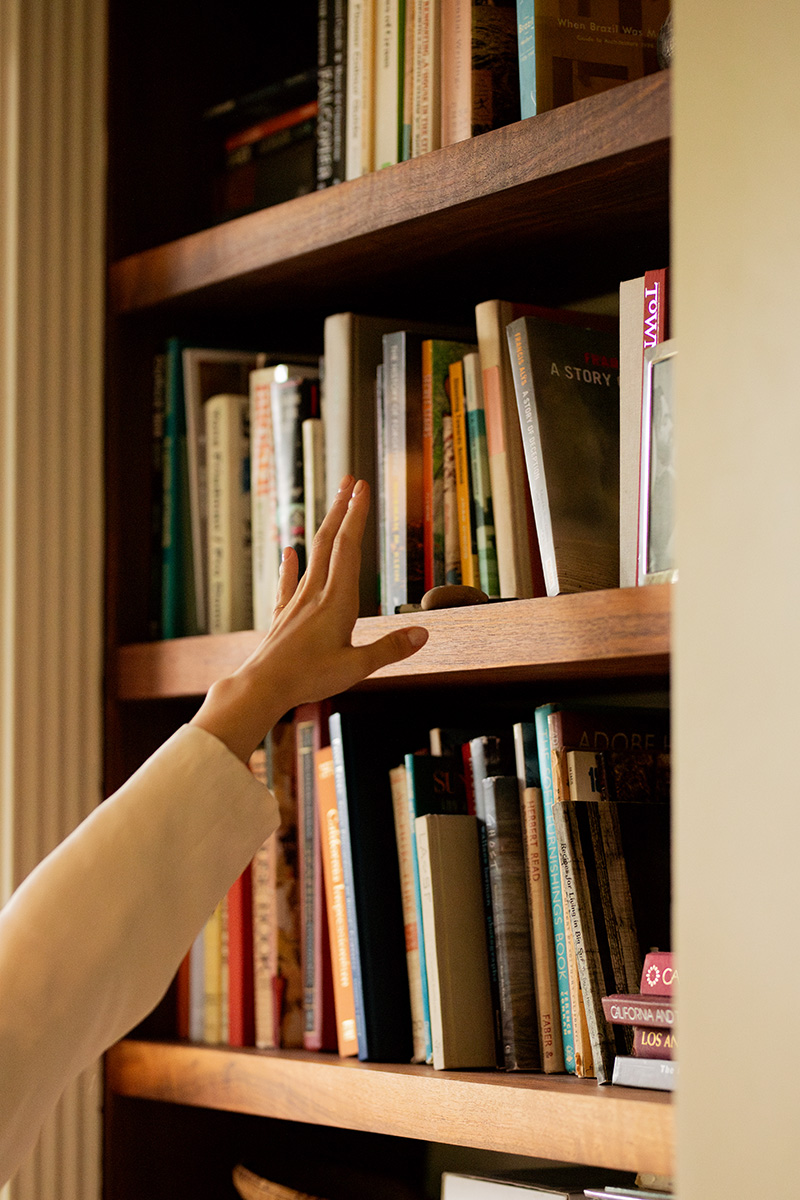
What Is The Divine Feminine?
It was always God the Father, the Son, and the Holy Spirit—a trio of beings referred to as “he” and “him” in my early days spent studying Catholicism. My classmates and I were taught stories about men who were “holy leaders” and women who were either perfect and virginal, or otherwise “impure.”
“I finally realized that I could look towards an energy instead of the bearded man in my textbooks. ”
As a young girl, the teachings felt restrictive. Even if I lived perfectly, I perceived that I’d still be judged based on the sins of one lady who once gave a guy an apple. (For anyone unfamiliar with Christian texts, this comes from the biblical story of Adam and Eve.) Quite literally, the patriarchal theology of my youth taught me that—for women—it was damned if you do, damned if you don’t.
But those years of believing that “feminine” meant “less than” cracked open when I first heard someone refer to God using “she” and “her” pronouns. My spiritual journey became even more exciting when I examined how an entity like God might transcend gender, include all genders, and be incapable of gender all at once. I finally realized that I could look towards an energy instead of the bearded man in my textbooks.
That’s when I discovered the divine feminine (also known as the sacred feminine) and its roots that pre-date Christianity.
The Roots Of The Divine Feminine
The divine feminine is the spiritual concept that there exists a feminine counterpart to the patriarchal and masculine worship structures that have long dominated organized religions. The divine feminine extends well beyond one belief system, and instead can be used as a spiritual lens to balance our perspective.
“The existence of the divine feminine suggests that complementary energies exist within each being.”
It’s not as simple as “men and women are opposites,” though. That gender binary is a divisive and false tool, as colonial approaches to gender have routinely devalued the feminine in Indigenous belief systems and matrilineal societies. Instead, the existence of the divine feminine suggests that complementary energies exist within each being, represented by various symbols and figures (that don’t have to be gendered—see below).
“I would argue that general popular references to ‘The Divine Feminine’ today exist within a context of working to redress perceptions of a gendered spiritual imbalance,” says Amy Hale, an Anthropologist and Folklorist who has written extensively on Pagan and esoteric spiritualities. “Of course, what we call ‘The Divine Feminine’ has a number of modern manifestations and a long religious history worldwide. Goddesses were worshipped extensively in older polytheistic religions, and are heavily represented in Roman, Greek, African and Egyptian contexts. In Hinduism, Goddesses are still worshipped and Tantric Buddhism and Tantric Hinduism both have a specific focus on female deities.”
Dr. Hale notes that in patriarchal Abrahamic religions, such as Catholicism, the Divine Feminine suggests a female component within the Trinity (some sects even acknowledge the Holy Spirit as feminine). “Some see worship of a Goddess as helping to rebalance negative cultural issues brought about by centuries of emphasis on a male God,” Hale says.
Why The Gendered Terms?
It’s not body parts or reproductive function that leads to femininity, nor is it the other way around. To base our spirituality in how our body is shaped is inherently exclusionary and limiting. Systems built upon such beliefs fail to actually account for the wide range of human experience that lends to the balance of our communities. But if the sacred feminine doesn’t have anything to do with gender, why do we use gendered terms to explain it? We don’t have to!
“If the sacred feminine doesn’t have anything to do with gender, why do we use gendered terms to explain it? We don’t have to!”
The feminine and the masculine are not singular and siloed energies—instead, they exist in balance. For example in ancient Chinese philosophy, Yin and Yang are a balance between receptive and productive, introspective and extrospective, feminine and masculine. But the two energies depend on one another—note how the symbol doesn’t cut harshly in a straight line down the middle. The black and white shapes swirl into and out of each other in harmony, changing, flowing, and making room for every possible version of balance.
Examine the ways we’ve upheld the dichotomy of the sun and the moon—and how interconnected and essential both are to the functions and movement of this planet. Consider the ways the right and left sides of our brain work together in harmony (and have traditionally, and questionably, been linked to the creative and logical sides of personality respectively).
Ultimately, the consensus I’ve found is that the divine feminine is closely connected to “receiving” or “hidden” while the masculine is “producing” or “visible.” And we’ve idealized the “producing” side of things as a society (particularly in the “hustle” culture of the US), that the “receiving” feels like a bad thing. In fact, it is only by receiving that we can continue to do (sound like self-care, anyone?).
“Embracing the divine feminine means examining ourselves honestly and holistically to find the balance that works for us.”
We’ve been wielding the sword for so long that we’ve forgotten to take a sip from the chalice to restore, to bring life, to foster growth.
These days, I no longer believe that the feminine and masculine exist singularly, or as physical incarnations. I imagine these masculine and feminine energies are omnipresent in every setting, every moment, and within each individual person. I am not only feminine and you are not only masculine—I am both, you are both, and there exists a balance between our energies that shifts and evolves.
When we stop viewing this concept from a perspective of dualism à la “good” and “bad,” I imagine that embracing the divine feminine means examining ourselves honestly and holistically to find the balance that works for us as individuals. To find the sharp bits and soften them, to find the most fragile parts of our hearts and stabilize and support them.
Goddesses & Feminine Archetypes
Feminine energy is connected with fertility, but again, it doesn’t need to be reduced to human reproduction. Growth, whether it’s spiritual, physical, or emotional, celebrates a feminine energy in that we give life to something that was not there before.
Archetypes of femininity and fertility from around the world and throughout history are abundant, and exploration of the Divine Feminine takes on many historical, anthropological, spiritual, and cultural forms. Here are some Goddesses, deities, and spirits that we can learn more about as we cultivate ourselves:
-
Freyja, ancient Norse Goddess
-
Oshun, Orisha of the Yoruba people in southwestern Nigeria
-
Aphrodite, ancient Greek Goddess
-
Venus, ancient Roman Goddess
-
Hathor, ancient Egyptian Goddess
-
Durga, Hindu Goddess
-
Asase Yaa, or Aberewa, the great female spirit of the earth in the indigenous religion of the Akan people of the Guinea Coast
-
Sophia, a figure in Gnostic Christianity that represents divine wisdom and feminine spirit
Start by researching the sacred feminine within your own cultural, spiritual, and ancestral traditions—she’s most likely there. Since I don’t currently have a denominational religious practice, I find restoration and inspiration from her in quiet moments writing, or caring for my animal companions.
If you find a Goddess or figure that resonates who lies outside of your traditions, remember to seek your truth with respect and authenticity rather than to co-opt beliefs as part of a fleeting trend. Many feminine deities and those who embody them have been vilified as witches by colonial religions and cultures, so approach this all mindfully and with awareness of the damages of cultural erasure.
Incorporating The Divine Feminine In Your Life
So if you’re feeling a pull towards exploring the divine feminine, what should you do? The divine feminine is for everyone and can be embraced by anyone.
“I’m also exploring how the divine feminine is beginning to rebalance in social and political spaces.”
I’m currently examining how the balance of the hidden and the visible are at play in my own life. Especially with social media, everything these days emphasizes the visible—what we wear, what we say, where we go. But how are we cultivating the hidden? The visible is easier to mend and tend than the hidden, and many of us are neglecting the hidden parts of ourselves.
I’m also exploring how the divine feminine is beginning to rebalance in social and political spaces. While we see a wave of women entering into the American political sphere, they represent an even larger force of rebalancing.
Climate change, racial justice, and health care are among many feminine conversations on the national stage—topics that focus on nurturing our planet and creating a balanced and supportive society rather than restrictive rules and policies. (After all, the Divine Feminine is apparently coming back in the Age of Aquarius, an age that we are now or soon will be in.)
Ultimately, the Divine Feminine is a non-denominational concept and self-exploration that restores a balance to our worship and spiritual practices. It’s the ease that balances out the control, the moon that pulls the tides while the sun warms the earth.
“The Divine Feminine is a non-denominational concept and self-exploration that restores a balance to our worship and spiritual practices.”
Maybe she embodies a woman, a moon, a chalice, or a lush garden. Maybe embodying this energy looks like prayer, or sensual experiences, or feeling the fertile soil beneath your feet. Meditate on how you can celebrate this energy within you and especially as a divinity within others—and let’s continue moving towards the balance that we all feel missing right now.
If you want to learn more, Dr. Hale notes that many books, while inspiring, can be historically questionable, so be sure to consider your sources carefully, and listen to a wide range of voices on this topic. Here are a handful of books she recommends for getting started:
-
“Rebirth of the Goddess: Finding Meaning in Feminist Spirituality” by Carol P. Christ
-
“The Divine Feminine: Recovering the Feminine Face of God Throughout the World” edited by Andrew Harvey and Anne Baring
-
“Orishas, Goddesses, and Voodoo Queens: The Divine Feminine in the African Religious Traditions” by Lilith Dorsey
-
“The Spiral Dance: A Rebirth of the Ancient Religion of the Great Goddess” by Starhawk
Emily Torres is the Editorial Director at The Good Trade. Born and raised in Indiana, she studied Creative Writing and Business at Indiana University. You can usually find her in her colorful Los Angeles apartment journaling, caring for her rabbits, or gaming.




